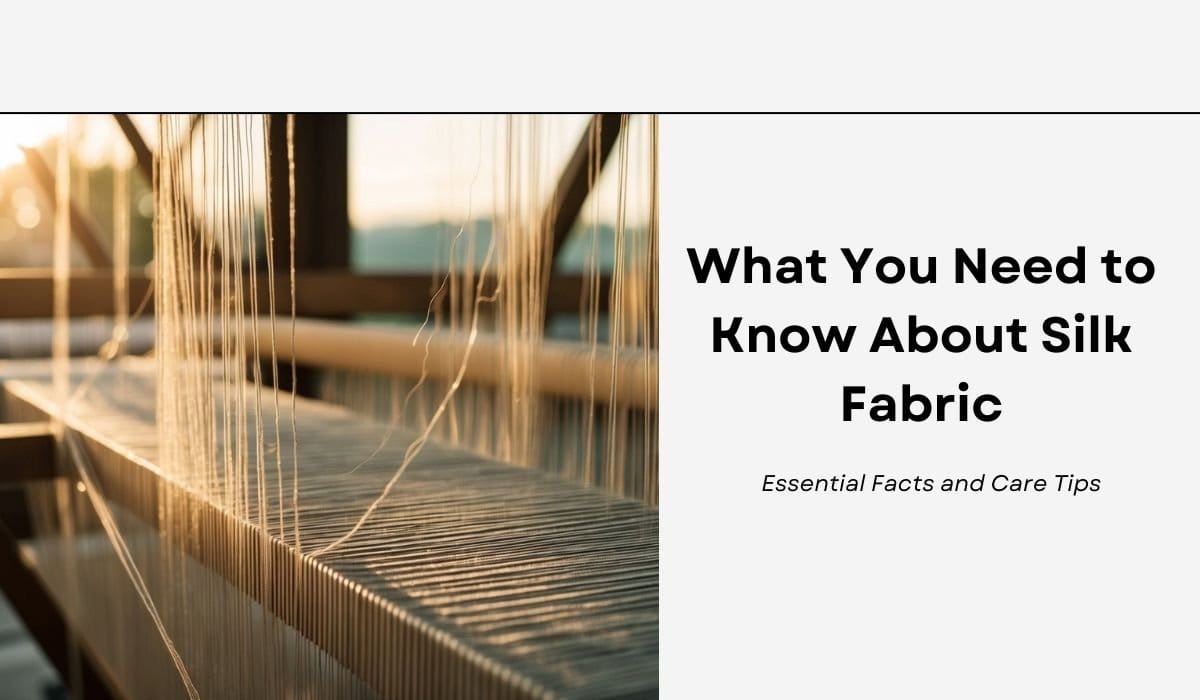Discover the Timeless Elegance and Practical Care Requirements of Nature’s Most Luxurious Fiber
Silk fabric has captivated people for thousands of years with its luxurious feel and stunning appearance. This special textile comes from the cocoons of silkworms, carefully unwound to create long, strong fibres. Silk is prized for its softness, sheen, and incredible strength-to-weight ratio, making it a versatile material for clothing and home décor.
Silk fabric comes in many forms, from lightweight and airy to heavy and dramatic. Some popular types include mulberry silk, the most common variety, and eri silk, which is made without harming silkworms. Each type has unique qualities that suit different uses, from flowing dresses to sturdy upholstery.
Caring for silk requires gentle handling, but its durability means silk items can last for years with proper care. While silk can be pricey, its timeless elegance and comfort make it a worthwhile investment for many. As you explore the world of silk, you’ll discover why this fabric has been treasured across cultures for millennia.
On This Page
Key Takeaways
- Silk is renowned for its softness, lustre, and strength, making it ideal for luxury garments and home furnishings
- There are several types of silk fabric, each with distinct properties suited to different uses
- Proper care can extend the life of silk items, preserving their beauty and value over time
The Rich History of Silk
Silk has played a crucial role in human civilisation for thousands of years. Its discovery led to the development of sericulture and the famous Silk Road trade route. Silk textiles have been prized by royalty and used for various purposes throughout history.
Sericulture and the Silk Road
Silk production began in China over 4,000 years ago. Legend says Empress Leizu discovered silk when a cocoon fell into her tea. She unravelled it and realised the fine threads could be woven into fabric.
The Chinese kept silk-making a secret for centuries. They developed sericulture, the art of raising silkworms and harvesting their cocoons. This led to the creation of the Silk Road, a network of trade routes connecting China to the Middle East and Europe.
The Silk Road allowed for the exchange of goods, ideas, and cultures. Silk became a highly valued commodity, sometimes worth its weight in gold.
Historical Uses of Silk Textiles
Silk has been used for various purposes throughout history. In ancient China, it was reserved for the emperor and high-ranking officials. Silk robes and banners were symbols of power and status.
In Japan, silk was used for kimonos, book bindings, and even samurai inflatable cloaks. The Japanese developed their own silk varieties, including Nishijin Ori, Chirimen, and Tsumugi.
European royalty prized silk for its luxurious feel and shimmering appearance. It was used for fine clothing, tapestries, and furnishings in palaces and grand homes.
Silk’s strength and lightness made it useful for parachutes and maps during wartime. Today, it remains a symbol of luxury in fashion and home décor.
Understanding Silk Production
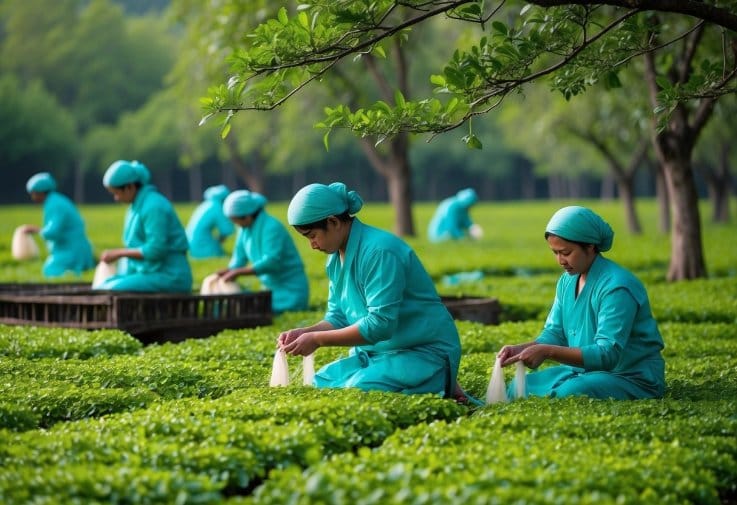
Silk production involves a fascinating process that transforms silkworm cocoons into luxurious fabric. The journey from tiny larvae to woven textiles requires careful cultivation and skilled manufacturing techniques.
From Silkworms to Silk Fibre
Silkworms, specifically the Bombyx mori species, are the key players in silk production. These caterpillars feed exclusively on mulberry leaves, growing rapidly over several weeks.
When ready to pupate, silkworms spin cocoons using a protein called fibroin. Each cocoon contains a single, continuous silk filament that can stretch up to 1.6 km long.
To harvest the silk, cocoons are carefully collected before the moths emerge. The cocoons are then heated to soften the sericin, a gummy substance that binds the silk fibres together.
Skilled workers unwind the delicate filaments from multiple cocoons simultaneously, combining them to form a single strand of raw silk. This process, known as reeling, requires precision and expertise.
Modern Silk Manufacturing
Once the raw silk is obtained, it undergoes several steps to become fabric. The silk fibres are cleaned, twisted together to form yarn, and then dyed to achieve desired colours.
Modern silk manufacturing employs advanced technology whilst still relying on traditional techniques. Automated reeling machines can process thousands of cocoons efficiently, ensuring consistent quality.
Weaving is a crucial step in transforming silk yarn into fabric. Skilled artisans use various weaving methods to create different textures and patterns, from smooth satin to textured crepe.
After weaving, the fabric undergoes finishing treatments to enhance its lustre and durability. These may include washing, stretching, and applying special coatings.
Quality control is essential throughout the manufacturing process. Silk producers carefully monitor each stage to ensure the final product meets high standards of strength, softness, and sheen.
Types of Silk Fabric
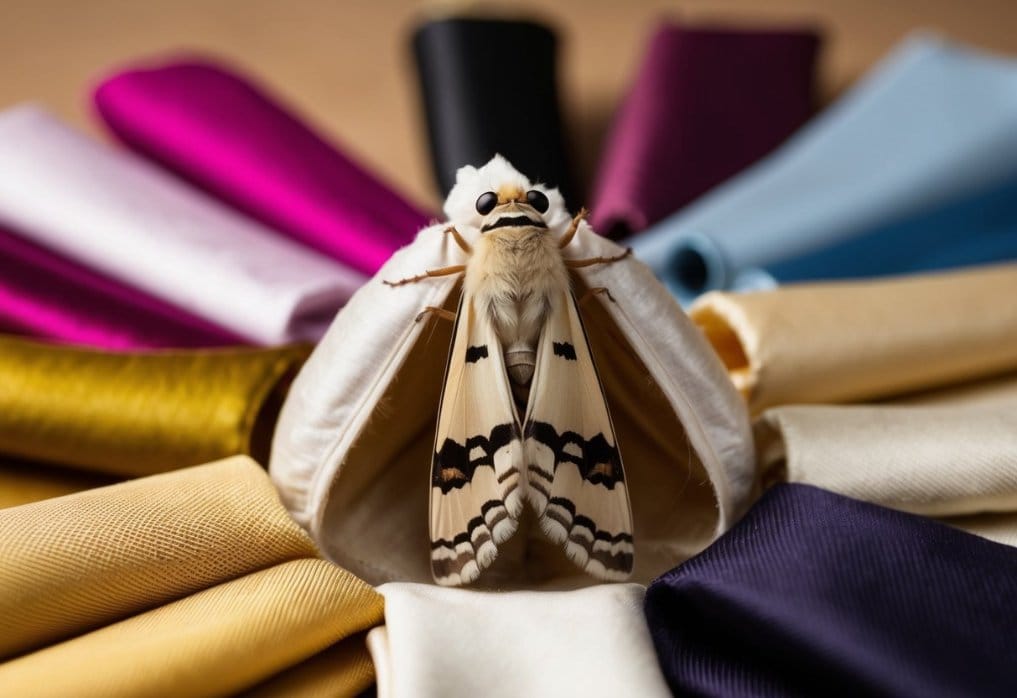
Silk comes in many varieties, each with unique qualities. The source and weaving method greatly affect the fabric’s look and feel.
Mulberry vs. Wild Silk
Mulberry silk is the most common type. It comes from silkworms fed mulberry leaves. This silk is soft, strong, and has a smooth texture. Mulberry silk is often used for luxury clothing and bedding.
Wild silk types include Tussar, Eri, and Muga. Tussar silk has a golden sheen and coarser texture. It’s less expensive than mulberry silk. Eri silk, also called peace silk, is made without killing the silkworm. It’s warm and looks like wool.
Muga silk is rare and expensive. It has a golden colour that gets brighter with washing. Spider silk is another wild type. It’s incredibly strong but hard to produce in large amounts.
Recognising Different Weaves
The weave of silk fabric affects its look and feel. Charmeuse has a glossy front and matte back. It drapes well and is often used for evening wear.
Organza is sheer and crisp. It’s popular for wedding dresses and formal wear. Georgette is lightweight with a crinkled texture. It’s great for flowy dresses and blouses.
Crepe de Chine has a slightly pebbly texture. It’s versatile and works well for many types of clothing. Habotai, also called China silk, is light and smooth. It’s often used for linings and lingerie.
The Distinct Properties of Silk
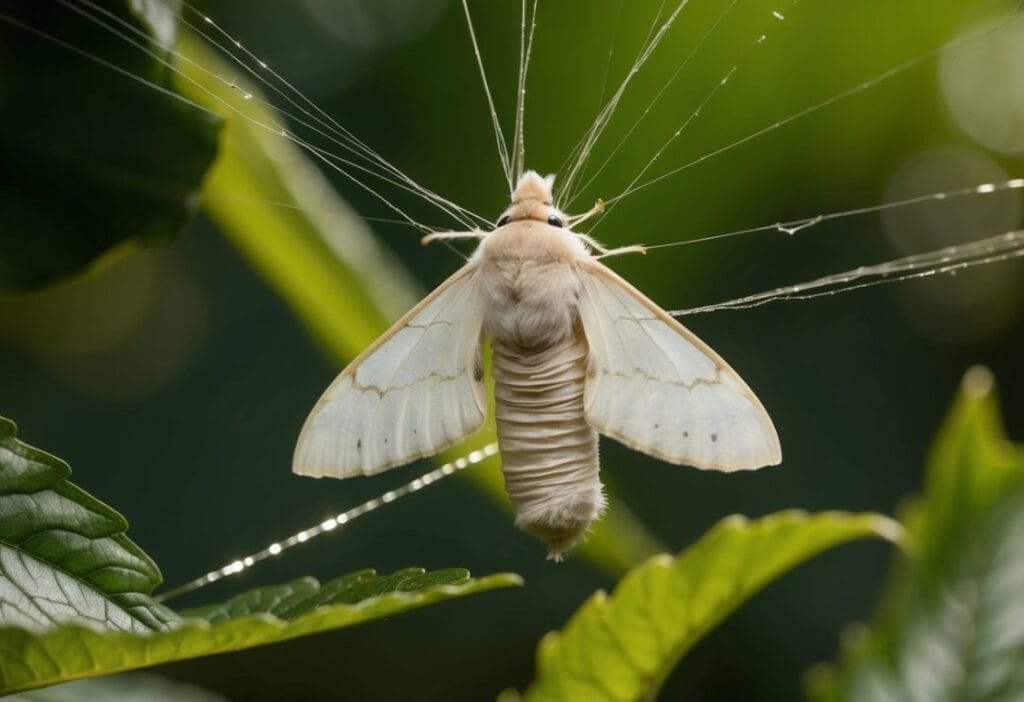
Silk fabric stands out for its unique combination of qualities. It offers a luxurious feel while also being strong and practical for many uses.
Texture and Luster
Silk is known for its soft, smooth texture. When you touch silk, it feels cool and silky against your skin. This fabric has a natural sheen that makes it look elegant.
The fibres in silk reflect light in a special way. This gives silk its famous lustre. The shine of silk can change based on how light hits it. This effect is called chatoyancy.
Silk drapes well on the body. It flows and moves gracefully. This makes it a top choice for fancy dresses and scarves.
Strength and Durability
Despite being very light, silk is surprisingly strong. It’s one of the strongest natural fibres. Silk is as strong as some synthetic materials.
Silk fabric can last a long time if you take care of it properly. It resists wear and tear better than many other fabrics. But silk can be damaged by rough handling or harsh chemicals.
One downside is that silk isn’t very stretchy. It can lose its shape if pulled too much. Silk also wrinkles easily, so it needs careful storage.
Thermoregulation and Hypoallergenic Qualities
Silk helps control body temperature. It keeps you warm in cold weather and cool in hot weather. This makes it comfy to wear all year round.
The fabric is breathable. It lets air flow through, which stops you from getting too sweaty. Silk can absorb up to 30% of its weight in moisture without feeling damp.
Many people find silk doesn’t irritate their skin. It’s hypoallergenic, which means it’s less likely to cause allergic reactions. This makes silk a good choice for people with sensitive skin.
Silk also naturally resists dust mites and mould. This can help reduce allergies for some people.
Silk in Fashion and Home Decor
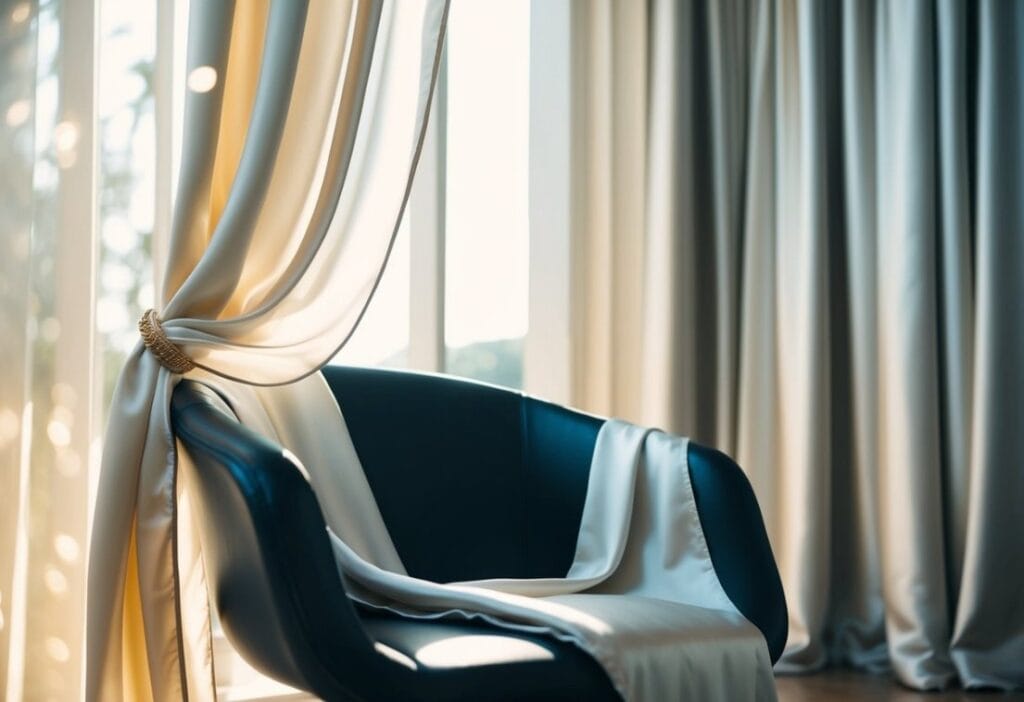
Silk fabric adds luxury and elegance to both fashion and interior design. Its smooth texture and lustrous sheen make it a popular choice for high-end clothing and home accessories. Silk’s versatility allows it to be used in various ways, from sleek evening gowns to plush bedding.
Silk Garments and Dressmaking
Silk is prized in fashion for its soft, smooth texture. It drapes beautifully, making it ideal for flowing dresses and blouses. Designers often choose silk for formal wear, such as wedding gowns and evening attire.
Sewing with silk requires care due to its delicate nature. Special needles and pins help prevent snags. Tailors may use French seams to create clean, finished edges.
Silk comes in various weights. Light silks like chiffon work well for scarves and summer clothing. Heavier silks such as dupioni are suitable for structured garments like jackets.
Silk Bedding and Accessories
Silk bedding offers both comfort and style. Silk pillowcases are popular for their smooth surface, which can help reduce hair frizz and facial creases.
Silk duvets and sheets provide temperature regulation, keeping sleepers cool in summer and warm in winter. They’re also hypoallergenic, making them a good choice for those with allergies.
In home decor, silk curtains add a touch of opulence to any room. Their light-reflective qualities create a soft, warm glow. Silk throw pillows and lampshades are easy ways to incorporate this luxurious fabric into interiors.
Silk upholstery, while less common, offers a sumptuous look for special furniture pieces. It requires careful maintenance to preserve its beauty.
Caring for Silk Items
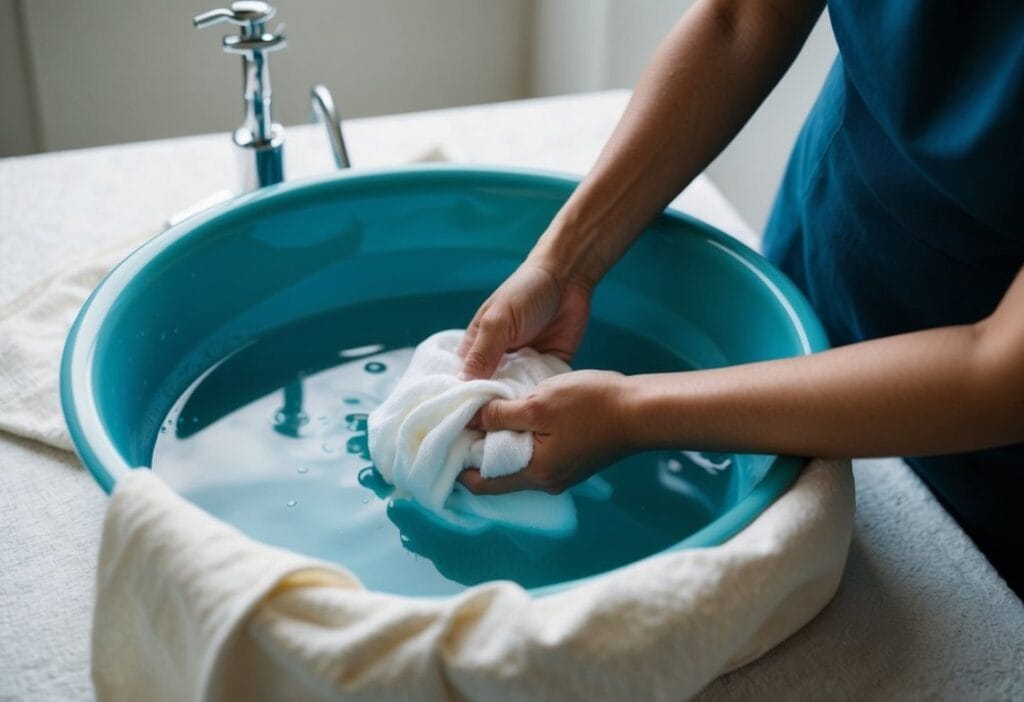
Proper care is essential to keep silk items looking their best. The right washing methods and storage techniques can help maintain silk’s lustre and softness for years to come.
Washing and Maintenance
Handwashing silk is the gentlest method. Use cold water and a mild, pH-balanced detergent. Avoid wringing or twisting the fabric, as this can damage the fibres. Instead, gently squeeze out excess water.
Air drying is best for silk items. Hang them away from direct sunlight to prevent fading. Never tumble dry silk, as the heat can cause shrinkage and damage.
For stubborn stains, spot-clean with a soft cloth and diluted detergent. Avoid rubbing harshly, as this can harm the fabric.
Ironing silk requires care. Use a low heat setting and place a clean cloth between the iron and the silk to prevent scorching. Steam can help remove wrinkles without direct contact.
Storing Silk Products
Proper storage is crucial for preserving silk fabric. Keep silk items in a cool, dry place away from direct sunlight.
Use padded hangers for silk garments to maintain their shape. Avoid wire hangers, which can create unwanted creases.
For long-term storage, wrap silk in acid-free tissue paper. This helps prevent yellowing and protects against dust.
Avoid storing silk in plastic bags, as this can trap moisture and lead to mildew. Instead, use breathable fabric garment bags.
Before storing, ensure silk items are clean and completely dry to prevent stains and odours from setting in.
Comparing Silk with Other Textiles
Silk stands out among fabrics for its unique properties. It offers benefits and drawbacks compared to other textiles.
Silk vs. Synthetic Fabrics
Silk is a natural protein fibre, while synthetics are man-made. Silk is known for its luxurious feel and shimmery texture. It’s breathable and moisture-wicking, keeping you cool in summer and warm in winter.
Synthetic fabrics like polyester are often cheaper and more durable. They resist wrinkles and dry quickly. But they don’t breathe as well as silk.
Silk has a higher thread count, making it softer. It’s also hypoallergenic, unlike some synthetics that can irritate skin.
On the downside, silk requires gentle care. It’s less resistant to stains and can be damaged by sunlight. Synthetics are usually easier to clean and more resistant to wear and tear.
Choosing the Right Fabric for Your Needs
Picking between silk and other fabrics depends on your priorities. Silk is ideal for luxury items and special occasions. Its smooth drape makes it perfect for elegant clothing and bedding.
For everyday wear, cotton or synthetic blends might be more practical. They’re often cheaper and easier to care for.
Consider the item’s use. Silk pillowcases can be great for hair and skin. But for outdoor gear, synthetic fabrics offer better durability.
Think about climate too. Silk’s breathability shines in varied temperatures. But in very hot or humid conditions, lightweight synthetics might perform better.
The Ethics and Sustainability of Silk
Silk production raises ethical and environmental concerns. Alternatives and sustainable practices are emerging to address these issues.
Ahimsa Silk: A Cruelty-Free Alternative
Ahimsa silk, also known as peace silk, offers a more ethical option. It allows silkworms to complete their lifecycle and emerge from cocoons naturally. This process yields a slightly less smooth fabric but ensures no harm to the moths.
Ahimsa silk production is labour-intensive and costlier than traditional methods. However, it appeals to consumers seeking cruelty-free fashion choices.
Some brands now use peace silk in their collections, catering to environmentally conscious shoppers. This shift reflects growing awareness of animal welfare in the textile industry.
The Future of Sustainable Silk Production
Sustainable silk production focuses on reducing environmental impact. Some initiatives include:
- Using organic mulberry leaves to feed silkworms
- Implementing water-saving techniques in sericulture
- Exploring recycled silk options
Researchers are developing innovative alternatives like spider silk and plant-based fibres that mimic silk’s properties. These could offer more sustainable options in future.
The silk industry is adapting to meet consumer demands for ethical and eco-friendly products. As technology advances, we may see more sustainable silk production methods emerge.
Frequently Asked Questions
Silk is a versatile and luxurious fabric with unique properties. It has various uses and comes in different types, each with its own characteristics.
What are the different types of silk fabric available?
Silk comes in several varieties. Mulberry silk is the most common and highest quality type. Other types include wild silk, dupion silk, and tussah silk.
Each type has distinct features and textures. Mulberry silk is known for its smooth, soft feel and lustrous appearance.
What unique properties does silk exhibit?
Silk is prized for its softness and lustrous appearance. It has excellent draping qualities and high tensile strength.
The fabric is lightweight yet durable. It also has natural temperature-regulating properties, keeping you cool in summer and warm in winter.
For which main applications is silk typically used?
Silk is used in a variety of products. It’s commonly found in clothing, bedding, and home decor.
In fashion, silk is used for dresses, blouses, ties, and scarves. For bedding, it’s popular in pillowcases and sheets. Silk is also used in upholstery and wall hangings.
What are the benefits of using silk in various products?
Silk offers numerous benefits. It’s hypoallergenic and gentle on the skin, making it ideal for those with sensitive skin.
The fabric is naturally moisture-wicking and breathable. This helps regulate body temperature and prevents the growth of bacteria and fungi.
How is silk produced and processed?
Silk production begins with silkworms. These larvae spin cocoons, which are then harvested and processed to extract the silk fibres.
The fibres are unravelled, cleaned, and spun into threads. These threads are then woven or knitted into fabric.
Can you list several interesting facts about silk?
Silk has been prized for thousands of years. It was once so valuable that it was used as currency in ancient China.
The weight of silk fabric is measured in momme. A higher momme count indicates a heavier, more durable fabric.
Silk is one of the strongest natural fibres. It’s also biodegradable, making it an environmentally friendly choice.
Related Post: Fabric 101: Essential Guide to Textiles and Materials

